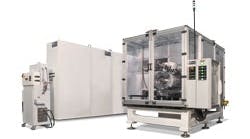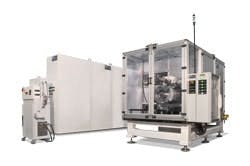Dan Hebert is senior technical editor for Control, Control Design and Industrial Networking. Email him at [email protected].
D&V Electronics based in Woodbridge, Ontario, builds machines to test electric motors and drives. "We manufacture vehicle starter, alternator or hybrid electric motor/drive testing systems," says Ciprian Baciou, an engineer at D&V. "These systems involve highly automated control and safety systems for actuators, pneumatic systems, and high-speed, high-power dynamometer systems."
As is the case with most machine builders, D&V builds a variety of similar machines. "We also specialize in developing testers for offshoot products that support these major components as well, including voltage regulators, diodes and solenoids," Baciou adds.
The automation systems for D&V's testers primarily use components from Beckhoff Automation, programmed in Visual Studio with C#. "Most of the application code is written for a common Windows PC platform environment, so it's portable to other testers," Baciou explains. "The functional blocks of code control dynamometer motor inverter systems, interface with safety controls on PLCs or controllers, accept data from data acquisition modules, create database reports, generate graphic images, and produce scoped measurement views, among other functions."
Although the controllers allow the use of five different programming methods, D&V prefers to use structured text. "Structured text is like straight coding and complements our approach for programming devices," Baciou says.
Most of the company's testing systems encompass all or many of the above functions, so the modules can be used by multiple machines. "Because the programming environment is similar, it allows us to generate code and deploy it across common platforms and common tests," Baciou adds. "This includes code to operate many off-the-shelf third-party devices, such as a thermal chamber, coolant system or resistance meter. The code is almost to the point of drop-in. It lowers cost of development, thanks to easier interface with native PLC or Beckhoff control modules. It also promotes a unified approach for support, diagnostics and debug."
It's also good for D&V customers. "The value it brings for our customers is that multiple testers at their site have a similar platform that can be improved for stability and reliability when software updates are available," Baciou notes. "Revised functional blocks and libraries that are improved and developed can almost immediately be validated and deployed very easily. The customer takes a lot of control of the test system by using modular software."
This article is part of the February 2013 cover story "Tightly Woven Function Blocks."





